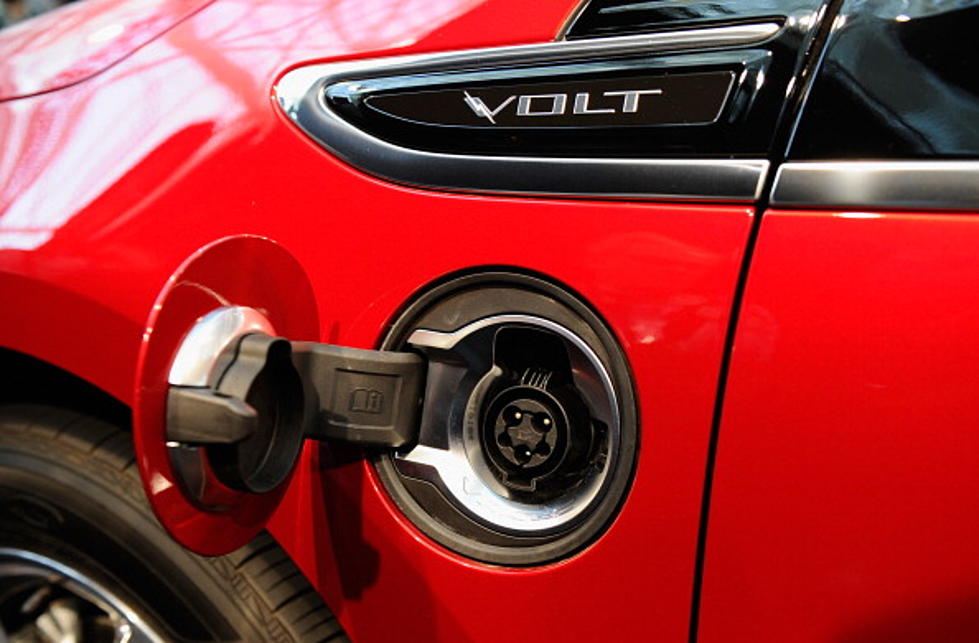
Road Tested: Nissan Leaf – Holistically Awful Plug-In or Good Little Greenie?
As someone with a lead foot who has never owned a vehicle with fewer than eight cylinders, I’ve never been able to understand the allure of most eco-cars. The fuel consumption may be lighter, but they have their own long list of problems as well.
With the exception of the Tesla Roadster and Model S, cars that are designed to be economical and environmentally friendly generally look as unpleasant as a war-wound, and are often the same lovely gangrenous color as well.
I firmly believe that this is done on purpose, as a way for the buyers of these vehicles to martyr themselves in the realm of style, as a way to ensure that everyone going by knows that they are environmentally conscious.
Due to my preconceived notions about these nasty little sweatboxes earnest little vehicles and my inordinate hatred of them, I thought it might be best to broaden my horizons and review vehicles which have a purpose other than blasting from light to light in front of the nearby rice-burner.
In the spirit of going big or going home, I decided to start with the newest plug-in vehicles available. For this, I tested the Nissan LEAF, which I will review here, and the Chevrolet Volt, which will be reviewed later in the week.
Driving an electric car is a very strange sensation if you’re not used to it. Even turning the vehicle on is a bit odd, because there’s very little noise and no tachometer to let you know that the car is, in fact, booted up. The LEAF makes no noise when starting up, and the Volt makes a peculiar swooshing sound as the coolant rushes to the batteries, reminiscent of a door opening in Star Trek.
These cars also have no forward or reverse creep, so you cannot simply put them in forward or reverse and ease out of a space while guarding the brake. When pressing the accelerator, the electric motors immediately deliver 100 percent available torque, delivering a relentless journey to highway speeds, even if a tad slow.
Stylistically speaking, the LEAF is not much of a looker. This is a car that, when driving by buildings with reflective glass near the street, one would be wise to avert your eyes to avoid a nasty bout of nausea. In sticking with the prevalent school of eco-motoring design, the vehicle looks like someone crashed a Battlestar Galactica Cylon helmet into the back of a bullfrog.
The current 2011 LEAF is only available in five colors, which include pearl, silver, black, red, and a rather effeminate blue, as well as one choice of light gray interior. The seats are made from partially recycled materials, and provide adequate support and a fairly decent driving position. Leather is not an option.
Getting into the car is a different story. Wedging all 6 foot 4 inches of me inside of the driver’s seat was a bit like climbing inside of a children’s teacup ride at an amusement park. Once in however, there was enough space to drive comfortably. The same can be said for the rear seats, which offer enough room to tootle around town in moderate comfort. Storage space is not particularly commodious in the rear of the vehicle, but the glovebox is a decent size for the fairly small car.
Amenities such as a touch-screen satellite navigation system, USB, auxiliary, and iPod ports, as well as an MP3 CD changer were in the test vehicle.
The gear selector seems to be the result of an unholy union between a BMW iDrive selector and the top of a soda can. In a somewhat counter-intuitive form, moving the selector forward engages reverse, and back puts the vehicle in drive. Park is delivered by pushing the center of the selector.
The ride is comfortable, and a bit quieter than that of the Chevy Volt. The dash display also conveys driving information without sprouting any pompous greenery, as some other eco-cars do while driving. The dash displays a power meter, allowing the driver to see how economical their driving style is in regards to acceleration, cruising, and how well one’s stopping feeds the 48 laminated lithium ion battery modules via a regenerative braking system.
Acceleration off the line is nothing to crow about, but the power seemed to be better between 18 and 35 miles per hour, so there’s little problem passing in traffic, even at highway speeds. Steering remained very responsive at all speeds, and the handling was unremarkable. The 80 kilowatt motor generates around 107 horsepower and 207 pound-feet of torque. A solar paneled spoiler located on the rear portion of the roof helps to power the car’s accessories.
Prices for the 2012 LEAF range from $35,200 for the SV package to $37,250 for the SL trim package, which is not particularly cheap for a vehicle that looks like the offspring of a Nissan Versa and a flathead catfish. A $7,500 income tax credit is available for those purchasing the plug-in vehicle.
While this car could be acceptable for some who have been bitten by the vehicular eco-smug-bug, there is quite a lot about it that I simply don’t like, and some issues that make it absolutely unacceptable.
The LEAF’s brochure is covered with grandiose platitudes such as “welcome to the new thinking” and “electric cars are the new reality,” which are merely a warning of the bad things to come. Also across the sides, you can have a decal that says “zero-emission” from the front wheels to the back door, just to remind everyone else why you’re driving an ugly car.
Nissan’s ecological pride and joy has a maximum top speed of 90 miles per hour, which is plenty for most drivers. The biggest problem is the car’s pathetic 100 mile maximum range. Charging the batteries fully using a normal 110 volt cable will take around 10 hours, and about 8 hours with a 220 volt connection. Some quick-charge connection stations are being created in some areas in the northwest, but are sparse and are unlikely to be located in West Texas soon.
This means, in order to travel the 118 miles to Midland from Lubbock in your LEAF, you would have to spend the night, or a sizable portion of a day in Lamesa, charging up for the last leg of the short trek.
Unless you’re assured that there will be no possibility of a car trip needed at any point, the LEAF is not a practical solution for a single-car or particularly active household due to the short range and lengthy charging time. The small amount of storage space means that the LEAF is also not particularly well-suited for grocery or other shopping trips, and is really only useful as a city runabout.
Also, despite the 8-year, 100,000 mile warranty on the LEAF’s batteries, the resale value of this car will be absolute garbage, due to the extremely high cost of subsequent replacement batteries. Battery performance will also decrease during the normal life of the car, causing more problems down the road. This opens up the very real possibility that, if the batteries are not replaced within the 8-year warranty period, the car will not be worth the cost of a new set of tires in a decade.
It’s a bit ironic that the car aimed at helping to save the earth may well be nothing more than a repulsive paperweight within ten years.
No matter how well-intentioned a driver may be, the Nissan LEAF isn’t the ecological hope that the brochure would have you believe, and certainly is not worth the nearly $40 grand it takes to slowly drive one of these home.
More From News/Talk 95.1 & 790 KFYO





![See the Ultimate ‘Star Wars Rogue One’ Collectible In Action [Video]](http://townsquare.media/site/189/files/2016/12/rogueone_onesheeta_1000_309ed8f6.jpeg?w=980&q=75)
![Nissan to Host Fundraiser for Hight Point Village [Audio]](http://townsquare.media/site/192/files/2013/12/highpointvillagefb2013.jpg?w=980&q=75)


